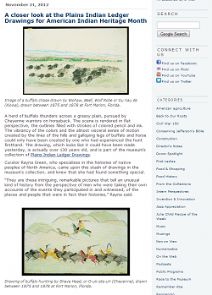As COVID-19 deaths spiked in 2020, Suzanne Firstenberg’s public art installation "In America: How could this happen…"
History Explorer Results (18)
Related Books (7)

Grade Range:
5-12
Resource Type(s):
Reference Materials
Date Posted:
10/31/2009
Students will learn about American industrial creativity by looking at industrial drawings, considering their aesthetic value as well as their importance to the design process. Engineers, inventors, and designers produce drawings as part of their creative process. They draw to work

Grade Range:
K-12
Resource Type(s):
Artifacts, Primary Sources
Date Posted:
9/25/2009
The evolving civil rights movement of the 1950s, 1960s, and 1970s revolutionized the consciousness of young people across the United States. As in African American communities, a new sense of mobilization spread among Mexican Americans. Many adopted a more political identity—chicano an

Grade Range:
3-12
Resource Type(s):
Reference Materials
Date Posted:
6/17/2009
This online exhibition focuses on the natural history specimens that were collected by Lewis and Clark on their historic expedition. The site contains images of museum specimens, scientific drawings, and field photos of the plant and animal species observed and described by Lewis and Clark, along

Grade Range:
K-12
Resource Type(s):
Artifacts, Primary Sources
Date Posted:
10/27/2008
Andreas Vesalius (1514–1564), an early European physician and professor of medicine, wrote an important treatise on the human body, published in 1543. He provided detailed illustrations that demonstrated muscle structure and other features of human anatomy, based on his work dissecting cadavers

Grade Range:
K-12
Resource Type(s):
Artifacts, Primary Sources
Date Posted:
7/31/2008
Abraham Lincoln's interest in canal building, river commerce, and internal improvements not only drew him to the Whig and later Republican Party, but also led him to try his hand at designing a device for raising boats off sand bars. Undertaken while he was a 40-year-old lawyer in Illinois, Linco

Grade Range:
K-12
Resource Type(s):
Artifacts, Primary Sources
Date Posted:
7/8/2008
The Apple Macintosh introduced a graphic user interface (GUI) to the Apple line of computers. The idea had originated at Xerox's Palo Alto Research Center in the 1970s, but Xerox was slow to commercialize it. Apple proved far more successful when it introduced the Macintosh in January 1984, with

Grade Range:
8-12
Resource Type(s):
Reference Materials
Duration:
5 minutes
Date Posted:
9/5/2013
In this post, readers will investigate a few examples of drawings made by Plains Indians who, in the late 19th and early 20th centuries, were held in captivity by the U.S. Army at places like Fort Marion in Florida. Curator Rayna Green describes how these images depict

Grade Range:
8-12
Resource Type(s):
Reference Materials
Date Posted:
7/20/2012
For a good part of the twentieth century, Harlem’s Apollo Theater was one of the most prestigious, important, and well-known venues for black entertainers. In this post, students will learn about the Schiffman family, who ran the Apollo from 1934 to 1976. In 1946, Frank Schiffman















